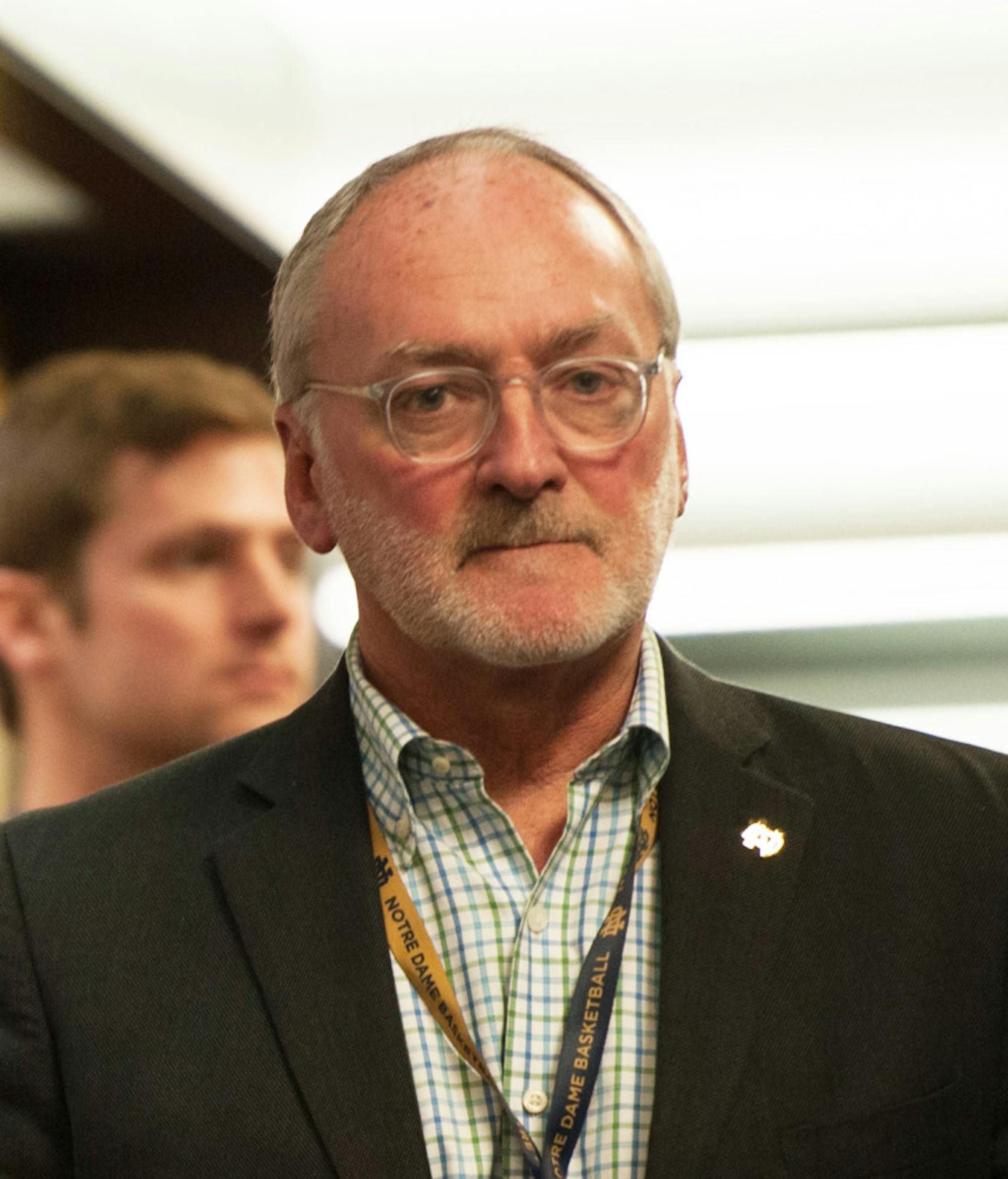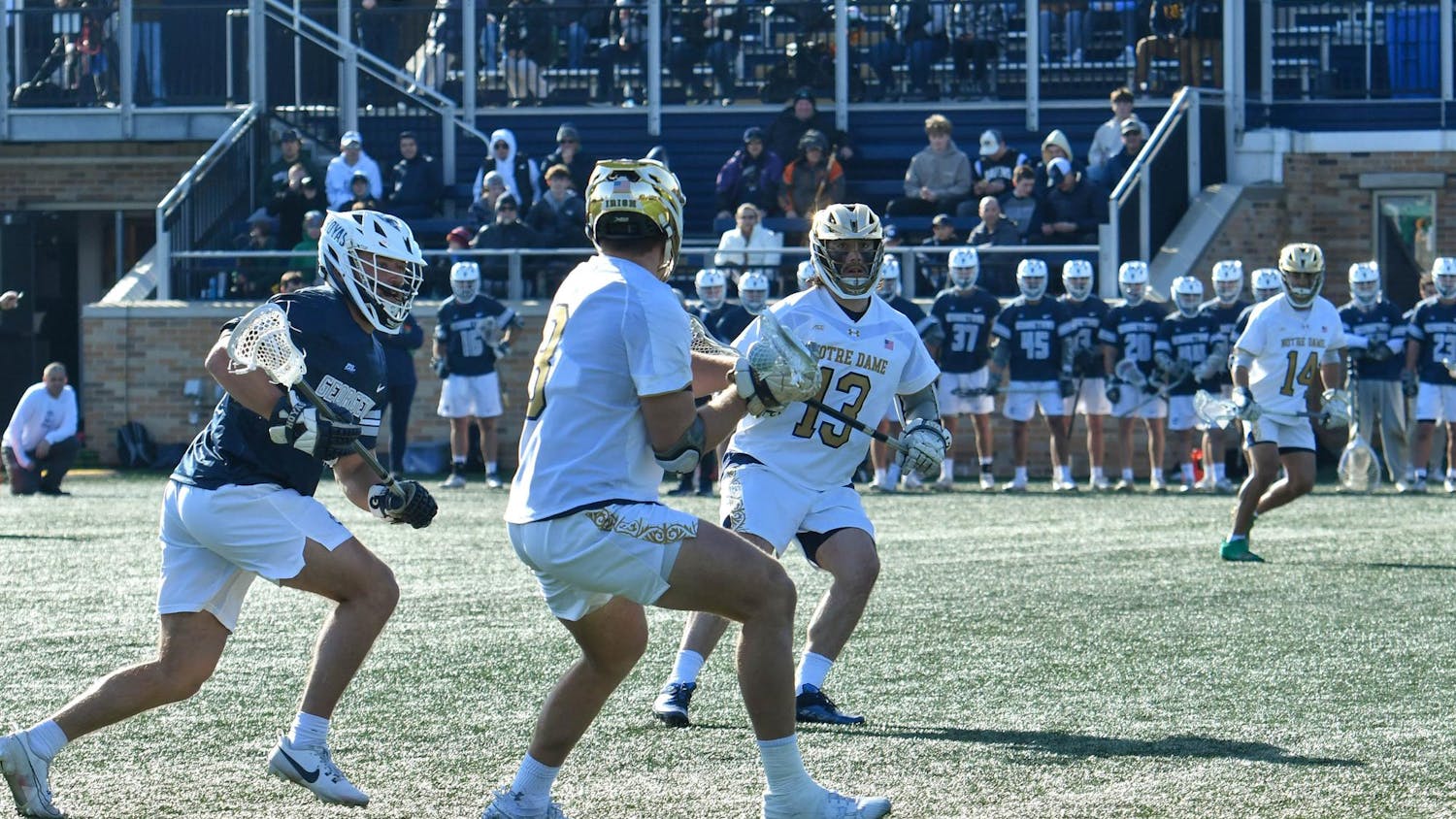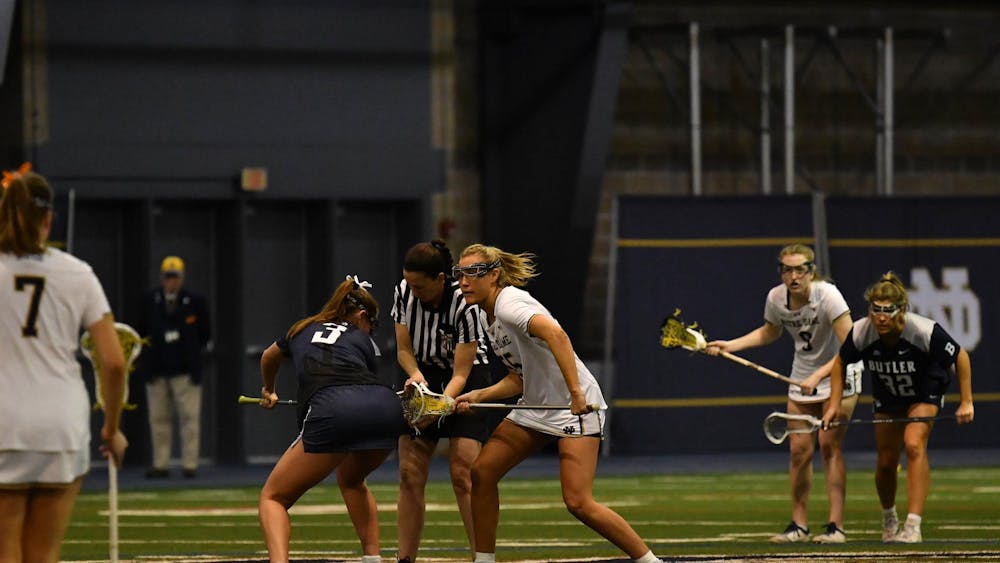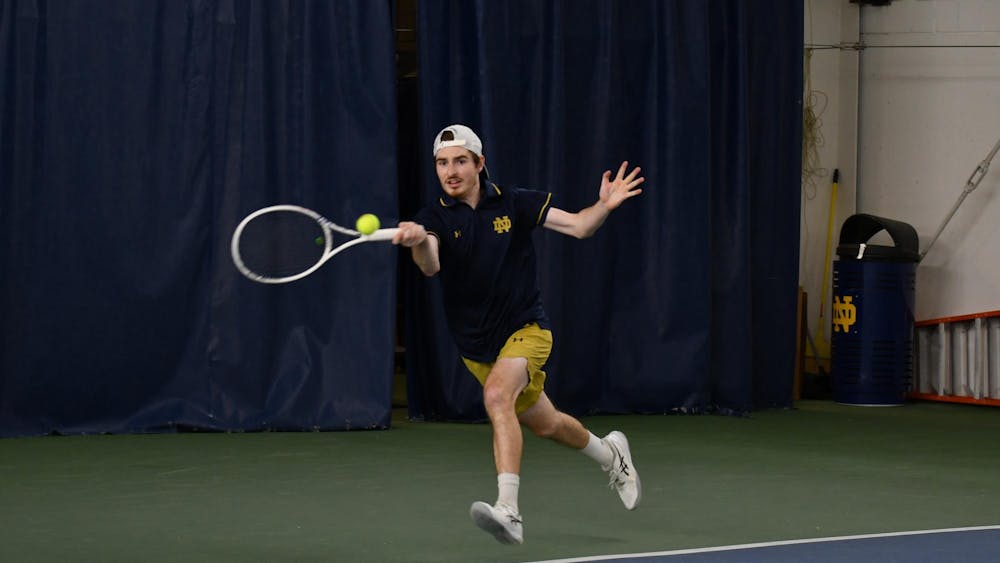Editor’s note: This is the second story of a three-part series featuring a wide range of topics covered in The Observer’s interview with director of athletics Jack Swarbrick. Today’s story focuses on the changes encompassed in the Campus Crossroads project.
When Notre Dame first unveiled its $400 million Campus Crossroads plan in January 2014, the idea of the finished building seemed far away. But three and a half years later, director of athletics Jack Swarbrick can see the Notre Dame brick and wrought iron windows of the newly-erected Corbett Family Hall from the window of his office.
The main feature of the renovation of the stadium is the addition of three buildings, spanning three sides of the bowl, but not obstructing the view of the famed Word of Life mural, or Touchdown Jesus, as it is better known. These buildings are made up of Corbett Family Hall, which will house the anthropology and psychology departments, O’Neill Hall, which will house the department of music and sacred music, and the Duncan Student Center.
“I’m most excited about what the stadium represents,” Swarbrick said in an interview with The Observer. “We’ve taken our most important athletic facility and maybe the most iconic athletic facility in college athletics and turned it into a year-round facility for students and faculty, in addition to being a great football venue. The symbolism of that is really important to us because it talks about our belief that those two things can be integrated.”
Atop the three large buildings, however, is another addition that is nearly impossible to miss, both inside and outside the stadium: a 54-foot by 95-foot video board. Swarbrick says the video board will add a new element to the fan experience at Notre Dame Stadium — a new layer he feels the gameday experience has been lacking.
“I think the most important [feature the video board provides], if you’ve been to a Shamrock Series game you’ve seen it, it’s going to allow us to tell the Notre Dame story more effectively,” Swarbrick said. “We’re going to do features on all kinds of elements of the University that help you understand who we are. We’re unique among college gameday experiences because so many of our fans come once a year. It’s not the same 80,000 people in the stadium every game, and so, we want to be able to tell the Notre Dame story to them. And so, I think that’s the first.
“The second is it will keep the fans much more engaged. I get complaints all the time about how long the television timeouts are. They’re not any longer here than they are any place else, but because nothing else is going on typically, they feel longer. Now you’ll be seeing replays, you’ll be seeing features about the University, after each play you’ll see a replay, so I think the fans will be much more engaged.”
But Swarbrick emphasized the idea that, despite the new elements of technology the video board provides, the stadium renovation, with the help of the video board, helps to bring Notre Dame Stadium back to its roots.
“I think this renovation captures the history much more effectively [than the last one],” Swarbrick said. “The renovation 20 years ago, adding a second deck, was important, but it was pretty spartan. It was poured concrete and you sort of lost the sense of the historic nature of the inner bowl. This recaptures it and I’m thrilled. I think our fans will notice immediately the bricking, the period lights, the banners, all recapture that history. The video board is another form to do that and we will celebrate a lot of what’s special about Notre Dame football, Notre Dame athletics and the University through the board.”
Despite the undeniable positives to the Campus Crossroads projects, there are drawbacks as well — 3,000 seats in the bowl will be lost as field bleacher seating is removed, the marching band moves from the field to the student section and premium skyboxes are installed.
“The premium seating certainly helps offset some of the reduction. It’s 3,200 premium seats, it offsets about 5,000 that we lost during construction,” Swarbrick said. “But, the principal value or purpose of the premium seating is to create other additional experiences. We had customers who wanted that experience and they get it at other places.”
With the season opener quickly approaching, as the Irish take on Temple on Sept. 2, and the Campus Crossroads project coming to a close, Swarbrick is looking to the future for the next big thing. Once basketball moves to Rolf’s — which requires renovation to make it a “state-of-the-art” facility — volleyball is next on the docket.
“Our most pressing project is to find a permanent practice home for our volleyball program. Coach McLaughlin is doing a great job of building that program up,” Swarbrick said. “Part of allowing basketball to get a practice facility in Rolf’s, we’ve taken North Dome and are creating Rec Courts for students and faculty. That was where volleyball practiced. Now we have to solve that problem. We knew that at the outset. We’re working toward solutions, but that’s the most pressing thing.
“And then the second for us is a second large indoor facility because of the time demands of all 26 sports relative to Loftus. Under the new NCAA legislations, times we can practice is a little more limited, which is favorable, we enjoy it, it’s good, but we just don’t have enough hours in Loftus and so we’ve got to try and figure something out.”













